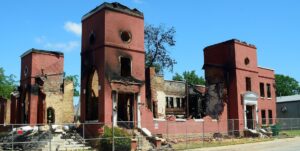
Evaluating the Economic Impact of Pasadena City College
There is a myriad of reasons to attend Pasadena City College (PCC), including gaining employable skills, learning a trade, or preparing for further higher education. What many people don’t consider, however, is the value that PCC offers to its community, both as a business that produces a valuable product, as well as a generator of regional revenue. A new study by economic modeling firm, Emsi, clarifies those values as they flow from the single PCC class of 2018-2019, reflecting a $600M annual spend building on an overall $4B return on investment. Those numbers are impressive in and of themselves, but they really stand out when you extrapolate their meaning across years of educational successes by PCC graduates.
Two Views: Multiple Values
The study looks at the college through two lenses:
as a direct economic generating entity, and
as a long-term public and private investment vehicle.
As a direct economic generation entity, the school is responsible for putting millions of dollars into Pasadena’s economy every year. As a long-term investment vehicle, the school returns billions of dollars of added value to its stakeholders by producing a well-trained workforce, developing innovative new enterprises, and maintaining area and regional industries.
Fundamentally, the Emsi research underscores what PCC’s community already knows: the college plays an integral part in the economic health and well-being of Pasadena and its surrounding region.
Economic Inputs – Class of 2018-2019
As a whole, the school and its constituents generate millions of dollars annually for the local community:
PCC offers a high-quality education for its students at a fraction of the cost of neighboring four-year universities. In-state residents will spend less than $4,000 annually for tuition, books, fees, and supplies, while the expense for out-of-state residents totals less than $10,000. Those values attract local and far-away learners; 65% of the 2018-2019 class came from out of the region.
Each student also represents additional spending in the form of lodging, food, and transportation. With a student population of over 26,000, annual student spending alone contributes over $16,000,000 to the local economy.
The college leverages those student funds to pay its faculty and staff, maintain operations, and support the surrounding businesses that provide its supplies and provisions. The cumulative annual spending by both school staff and its daily operations contributes another $177 million to the local economy.
Together, student and administrative spending by PCC each school year add approximately $200 million to the local economy.

Investment Returns
So, what values does the college generate for its community after its students graduate? According to the report, they are many and they are significant.
For students:
PCC students invest significant values into their education, including not just their tuition and living costs, but also in the forbearance of wages they would earn if they were working instead of attending school. Many also take out student loans to cover their college costs. The class of 2018-2019 invested over $58 million in out-of-pocket expenses and another $167 million in foregone wages and time.
Their investment will pay them back well, however. PCC 2018-2019 graduates with associates degrees will earn approximately $10,500 more per year throughout their career than their high-school graduate peers ($45,000 versus $34,000) and almost double that of non-high school graduates ($26,000).
The return on investment for each student ratio’s out at 4.2; they eventually reap $4.20 in higher earnings for every dollar they spend.
For Taxpayers:
In general, State investment in California’s community colleges is substantial. For example, PCC will use a $42 million appropriation to construct the new Armen Sarafian Building, part of the State’s $215 billion investment in its community schools.
Those investments are expected to rise, too, as California invests in the infrastructures its industries will need in the coming decade. California estimates an 11% growth rate for workers with associates and postsecondary nondegree-level skills by 2026 (as compared to only 7% for all occupations). Further, by 2025, California’s Public Policy Institute predicts a shortage of one million workers in these fields, a fact which demonstrates the growing value of the community college as an economic engine.
The City of Pasadena is thirsty for those workers, too. Its 13 commercial areas are home to globally recognized businesses and industries encompassing every style of occupation from technology to environmental resources to healthcare and healthcare education. These commercial ventures are already invested in the area’s perfect weather and collegial attitude; they are also more than interested in investing in a well-trained workforce, too.
The value of those investments is repaid in a myriad of ways by PCC, its students, and its alumni.
Throughout their careers, PCC graduates return two dollars for each individual public dollar that supported their education.
Additionally, these investments and the improved lifestyles of their recipients represent millions of dollars of costs avoided:
Employed workers make fewer demands on public healthcare services;
Well-educated citizens have fewer interactions with law enforcement, and
Reliable and well-paying employment reduces the demands on income assistance programs.
The net value to taxpayers of the benefits of supporting PCC also ratio’s out to two-to-one, so the State generates twice as much long-term value than it spends on its original investment.
For Society in general:
The Pasadena region benefits in two significant ways because of the presence and significance of its City College:
Added values increase each year as PCC graduate generates higher wages for themselves and contribute higher purchasing and tax values to their neighborhoods. Reduced social costs enhance those added values.
Economically independent citizens enjoy better health outcomes, reducing healthcare costs;
Reduced crime rates reduce demands on public policing services, and
Reduced reliance on public assistance programs such as welfare and unemployment claims lessens the demands on those programs.
The Emsi report indicates that the cumulative revenue benefits and social savings generated by PCC throughout the work lives of its 2018-2019 graduating class totals $4.4 billion, which represents a cumulative return of investment of $9.80 for every single dollar invested.
For the Future:
Not insignificant is the effort of PCC’s alumni population. Since 1924, the college has served tens of thousands of students from dozens of countries. For each student, PCC provided the education, experience, and credentials needed to pursue their career of choice. More recently, as one of the State’s top schools for transfers to four-year universities, PCC has also offered the foundational education needed for those learners to excel at those schools and beyond. The Emsi report reveals that, just in the 2018-2019 school year, PCC alumni contributed an additional $407 million to the regional economy.
When combined, the alumni economic contributions and the annual PCC financial contribution total over $600 million in commercial, public, and social values for the school year 2018-2019. When extrapolated over decades, the dollars generated and saved by PCC and its graduates demonstrate the long-term, sustained, and sustainable values that Pasadena City College offers its students, graduates, community, and region.


